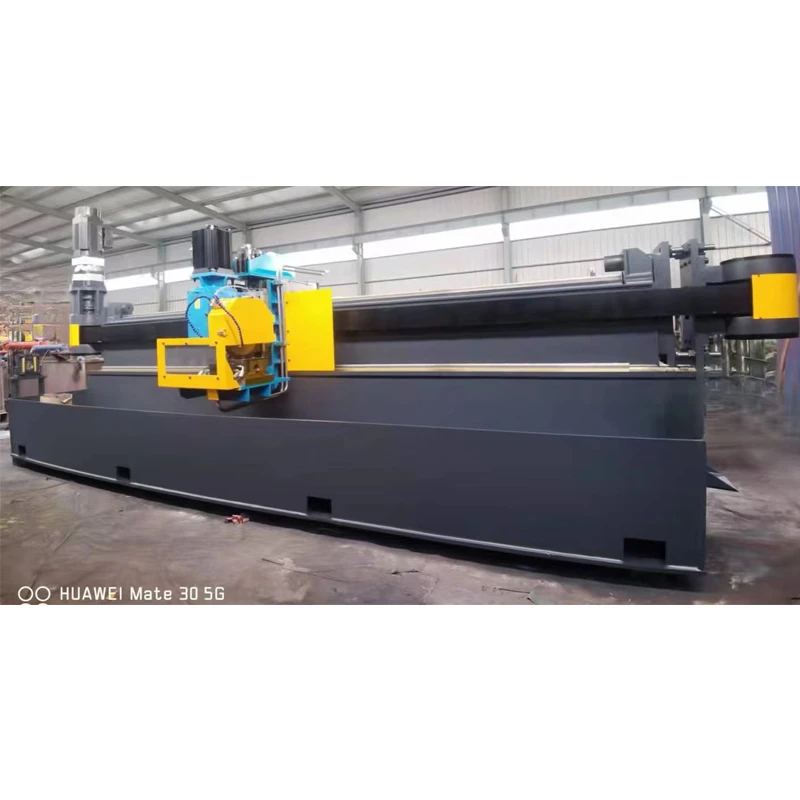uncoiler
Understanding the Uncoiler An Essential Tool in Metal Fabrication
In the world of metal fabrication, the uncoiler plays a crucial role in streamlining processes and enhancing productivity. This equipment, essential for handling coils of metal, is widely utilized in various industries, including automotive, aerospace, construction, and manufacturing. Understanding the uncoiler's function, types, and benefits is vital for anyone involved in metal processing.
What is an Uncoiler?
An uncoiler is a mechanical device designed to unwind coils of metal, allowing for efficient feeding into subsequent processing machinery. As metal is typically supplied in large rolls, the uncoiler assists in converting this raw material into manageable strips or sheets. The process of uncoiling involves carefully releasing the tension in the coil without causing damage to the metal itself, thus preserving its integrity for further processing.
Types of Uncoilers
Uncoilers come in various designs and configurations to suit different industries and processes. Some common types include
1. Standard Uncoilers These are basic designs suitable for light to medium applications. They typically feature a simple structure with a manual or powered mechanism to uncoil the metal.
2. Heavy-Duty Uncoilers Designed for larger coils and heavier materials, heavy-duty uncoilers are built to withstand the stresses of heavier applications. They often come equipped with enhanced support systems and powerful motors.
3. Powered Uncoilers These uncoilers utilize electric or hydraulic power to facilitate the uncoiling process. By incorporating automatic features, powered uncoilers significantly reduce the need for manual labor and enhance operational efficiency.
uncoiler

5. Mobile Uncoilers Ideal for setups with limited space or for jobs that require mobility, mobile uncoilers can be easily repositioned within the fabrication environment.
Benefits of Using an Uncoiler
The incorporation of an uncoiler into the metal processing workflow brings about several advantages, such as
- Increased Efficiency An uncoiler dramatically speeds up the feeding process, allowing for quicker turnaround times in production. By automating the unwinding process, operators can focus on other critical tasks.
- Improved Safety Manual handling of heavy coils poses significant safety risks. By utilizing an uncoiler, the risks associated with handling and uncoiling heavy metal coils are minimized, leading to a safer work environment.
- Reduced Material Wastage An effective uncoiling system prevents damage to the metal coil, reducing the likelihood of defects and waste in the production process.
- Versatility Uncoilers can handle a variety of materials, including steel, aluminum, and copper, making them versatile tools in manufacturing and fabrication settings.
- Adaptability Many uncoilers can be integrated with other machinery, such as shears or slitting machines, creating a more streamlined process from coil to final product.
Conclusion
As industries continue to innovate and evolve, the role of the uncoiler becomes increasingly significant in metal fabrication. By ensuring efficient, safe, and precise handling of metal coils, uncoilers contribute to the overall productivity and quality of the manufacturing process. Whether operating a small workshop or a large-scale factory, understanding the importance of the uncoiler can lead to better operational practices and improved output. Investing in the right type of uncoiler is not just a decision for today, but a strategic move towards a more efficient and productive future in metal fabrication.
-
High Frequency Straight Seam Welded Pipe Production Line-BzZhou Xinghua Machinery Equipment Manufacturing Co., LTD.|Precision Welding, High EfficiencyNewsJul.30,2025
-
High Frequency Straight Seam Welded Pipe Production Line|BzZhou Xinghua|Precision Welding&EfficiencyNewsJul.30,2025
-
High Frequency Straight Seam Welded Pipe Production Line - BzZhou Xinghua|Precision Engineering&EfficiencyNewsJul.30,2025
-
High-Frequency Straight Seam Welded Pipe Production Line-BzZhou Xinghua Machinery Equipment Manufacturing Co., LTD.NewsJul.30,2025
-
High-Frequency Straight Seam Welded Pipe Production Line-BzZhou Xinghua Machinery Equipment Manufacturing Co., LTD.|Precision Manufacturing, High EfficiencyNewsJul.30,2025
-
High Frequency Straight Seam Welded Pipe Production Line-BzZhou Xinghua Machinery Equipment Manufacturing Co., LTD.|Precision Steel Pipe Manufacturing&Industrial EfficiencyNewsJul.29,2025


